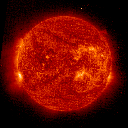Cuttlebirds and muttonfish

Today rambled over the south headland, which I don't do as often as I'd like. There are hundreds and hundreds of cuttlefish shells, the internal shells of soft-bodied marine cephalopods. These shoehorns of shell are best known as beak-sharpeners and a source of dietary calcium for a famous Aussie, the budgerigah (budgie), and for other birds.
There are 119 species of cuttlefish, which look something like squid but, unlike squid, can be domesticated and around the world many people keep them as pets. Some say they are the "cat of the sea". You know those old sepia photographs you see in museums? Sepia was made from the ink of this fascinating creature before being replaced by modern chemicals.
The difference between the tides this week is very great, so great, in fact, that lifesaving authorities have issued a public warning for people to take extra care swimming in North Coast estuaries. The estuaries, lakes and lagoons fill at high tide, and as the tide recedes it can come with a "whoosh!!" that might take you on a one-way trip to Peru via New Zealand, so take care.
On the other side of the headland, on the high-tide mark, were more dead muttonbirds than I'm happy to report, one every few paces on the south end. They're in a fairly advanced stage of decomposition and have become meals for bacteria, bugs and crabs. Most of the ex-birds had a large crab hole in the sand beside them, and quite a few seemed to be peering down a crab hole, making me wonder if the heads had been dragged down by the crustaceans.
Muttonbirds, as they're known around here, or Wedge-tailed shearwaters (Puffinus pacificus), make a round-trip of thousands of kilometres each year to Japan, SE Asia, the Korean peninsula, even Siberia, ending up at places like Muttonbird Island at Coffs Harbour. People can walk out to the island via a seawall, where the birds' breeding burrows dot the landscape. Unfortunately, it's common for exhaustion or storms to defeat many birds before they make it home and they can often be found in large numbers on their sandy necropolises. Necropoli. Cemeteries.
If you have Flash, there's a great online documentary I'd recommend, A Year on the Wing, about another Australian/Siberian migratory bird, the Eastern curlew. Follow the bird through its amazing annual cycle. That site also provides a very cool link to a place for lots of free posters of this and other topics, Department of the Environment and Heritage. I'll be browsing it further, for sure.



















0 Comments:
Post a Comment
<< Home